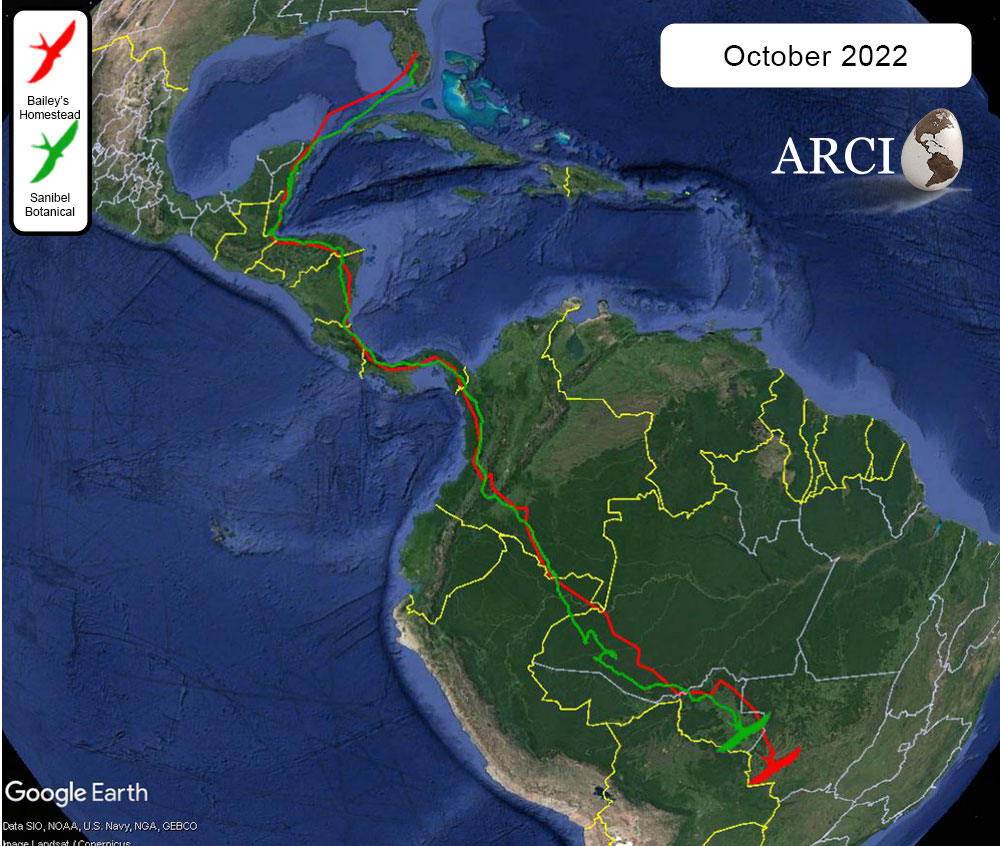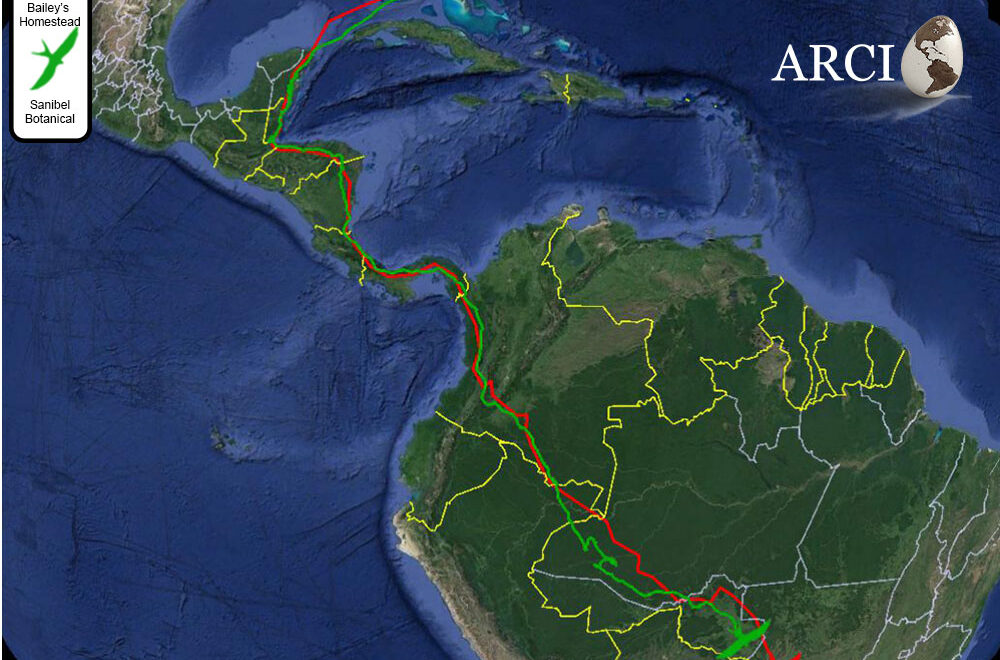ARCI has tracked four Swallow-tailed Kites with remote GSM-GPS telemetry since 2019 from Sanibel, Florida. The most recently tracked kites were tagged in 2021. As we watch the Gulf Coast of Florida rebuild after hurricane Ian, we think of our colleagues, friends, and wildlife that call this place home. No doubt habitat has changed for humans and birds alike and the Swallow-tailed Kites were fortunate to have already traveled to South America before the storm came through. Upon returning next spring, the kites may face higher competition for the few remaining tall trees for nesting, and many may head inland to suitable habitat. We are following two GSM-GPS-tracked Swallow-tailed Kites that will hopefully allow us to better understand post-hurricane movements and nesting in 2023.
Sanibel Botanical (female) and Bailey’s Homestead (male) both spent the pre-migration preparation time in Glades and Highlands Counties, Florida. They then flew across the Gulf of Mexico to the Yucatán Peninsula in Mexico in late July 2022.
Both Kites had a very similar migratory path about one week apart as Bailey’s Homestead followed Sanibel Botanical’s lead. After spending a week-long stopover in Quintana Roo, Mexico, they continued south through Central America into Colombia, crossing the Andes Mountains at a similar spot east of Cali, Colombia. Once they crossed into Peru, Sanibel Botanical took a southwestern route, 100 miles from Bailey’s Homestead’s route. After 620 miles, their routes met again, crisscrossing for the next 200 miles through Amazonas and Rondônia, Brazil.

Sanibel Botanical’s latest location was 2 October 2022 in Primavera de Rondônia in western Brazil and Bailey’s Homestead last checked in on 21 September 2022 south of the Paresi region of Rondônia, also in Brazil and 280 miles south of Sanibel Botanical.
While data location uploads are spotty due to the sparseness of cell towers needed for data transfer, both these kites and most of the U.S. Swallow-tailed Kite population is settling into their winter ranges in Brazil, Bolivia, and Paraguay. We’ll keep reporting as we learn more.
Thank you to all that have made these tracking studies possible.
American Bird Conservancy (ABC)
bioGraphic
CROW – Clinic for the Rehabilitation of Wildlife, Inc.
Florida Panther National Wildlife Refuge
Forest Investment Associates (FIA)
Friends of Florida Panther National Wildlife Refuge
Friends of Palmetto Bluff Conservancy
Friends of the Lower Suwannee & Cedar Keys National Wildlife Refuges
International Paper (IP)
Lower Suwannee National Wildlife Refuge
National Audubon Society
Orleans Audubon Society
Palm Beach County Department of Environmental Resources Management
Palm Beach Zoo and Conservation Society
Palmetto Bluff Conservancy
Resource Management Service (RMS)
Sanibel-Captiva Audubon Society
Sanibel-Captiva Conservation Foundation SCCF
St. Augustine Alligator Farm Zoological Park
St. Petersburg Audubon Society
The Avian Reconditioning Center for Birds of Prey
White Oak Forest Management


Leave a Reply